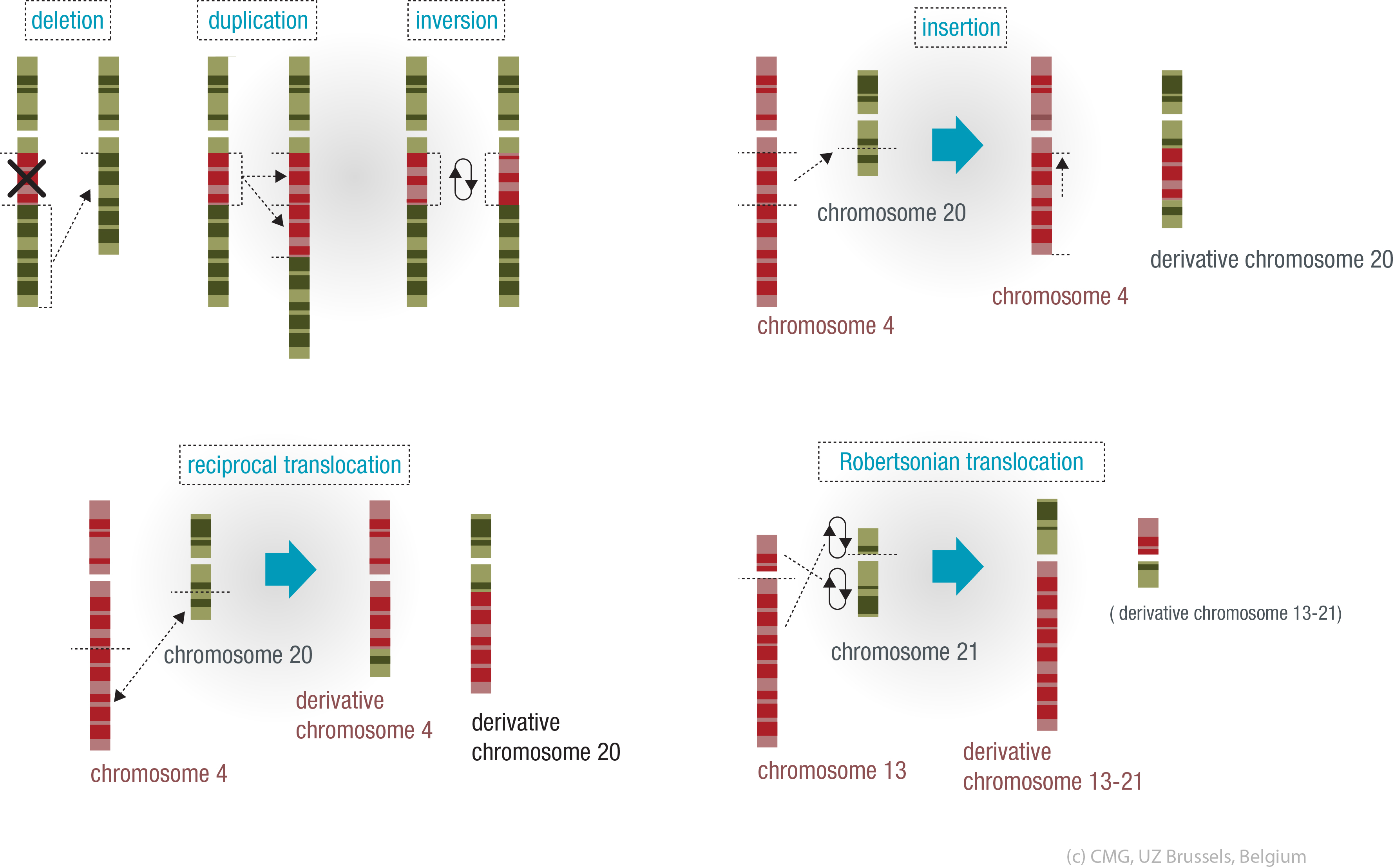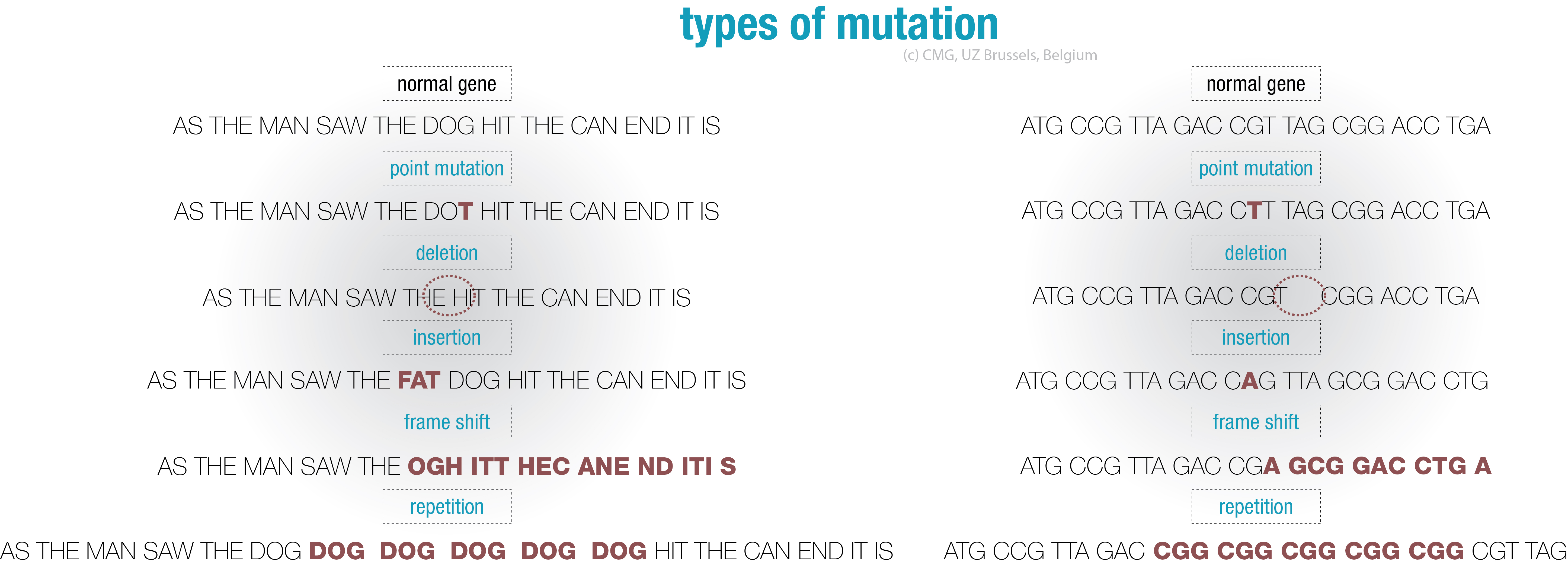Genetic variation
A genetic 'error' can sometimes occur at the chromosomal level. In this case it is visible under the microscope as a numerical abnormality (duplication or deletion of a whole chromosome) or as a structural abnormality (translocation, inversion, partial insertion, deletion or duplication). Errors can also occur at the level of the DNA within a single gene (e.g. a point mutation).
Continue reading below the image.
An error in the genetic code does not necessarily result in major changes or cause a disorder. Some errors are minimal and simply involve letters being switched, so the instructions in our manual do not become illegible as a result.
Continue reading below the image.
As stated above, a gene codes for a protein, so we can see the instruction as a kind of recipe. Imagine that brown sugar is exchanged for white sugar in the recipe. This will cause no more than a difference in flavour. The resulting cake is still a dessert and fulfils its function. However, if we were to use salt instead of sugar, the dessert would be inedible. The same would be true if we carried out the instructions of the recipe in a different order or accidently inserted the instructions for making a dessert in the part of the book that deals with making soup.
In other words, the impact of a genetic coding error on our cells and our body depends on the type and seriousness of the error.

